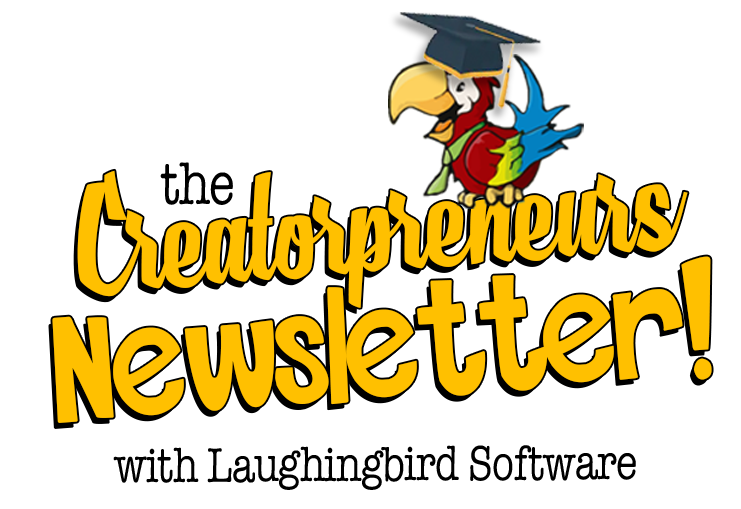How to Grow Your Business with a Lead Magnet: Convert Visitors into Loyal Customers
If there’s one universal truth about human behavior, it’s this: people like free stuff. In business, leveraging this basic human joy can seriously boost your sales and help grow your business. So, how do you harness this magical principle? Enter, the Lead Magnet—a strategic freebie that doesn’t just say “Hey! Look at me!” but screams “I have exactly what you need, and guess what? It’s free!”
But let’s not romanticize too much. Did you know that over 80% of your website visitors leave without taking a single action? They dart out! Like a cat you tried to pet too soon. So how do we charm these digital skedaddlers? Let’s dive into the secret sauce of lead magnets and how they can turn shop-and-surf visitors into loyal-paying customers.
Why a Lead Magnet is Key to Growing Your Business
Let me ask you this: if someone knocked on your door, shoved a flyer in your face, and asked you to buy a miracle juicer, what would you do? Slam the door? Same. But if they handed you a sample of fresh juice and said, “This could be your life every day,” suddenly you’re intrigued. That’s exactly what a lead magnet does, except instead of juice, you’re offering value tailored to your audience—something they already want or need.
The principle here is simple: give before you ask. In practical terms, that means creating something valuable—a freebie—that’s worth more than it costs your visitor to give you their email address. Yes, their email address is a currency. Once they invite you to their inbox (annnnd don’t annoy them), this relationship can lead to sales down the line.
What Exactly is a Lead Magnet?
Oh, I love this part because it sounds much techier than it really is (you can impress your friends by saying, “I’m building a lead magnet funnel”). A lead magnet is essentially a piece of free value—content, tools, discounts, or other goodies—that solves an immediate problem for your potential customer. In exchange for this freebie, they give you their email and a chance to prove you’re worth sticking around for.
It’s like those adorable slides at playgrounds. Once you convince someone to climb up the ladder of trust, they’re on a smooth slide into your email list (and potentially, into paying-customer bliss).
How It Works:
- You offer a valuable freebie people can’t refuse (more ideas on this later—hang tight).
- You collect their name and email through an opt-in form (we’ll talk forms soon).
- Once they sign up, bada-bing bada-boom—you send them the freebie and take the first step toward building a relationship.
What Makes a Lead Magnet Irresistible?
Now, we don’t want just any lead magnet; we want one that clicks like the “last cookie in the jar” kind of click. For a lead magnet to truly grow your business, it must:
- Address a Specific Problem: If it solves something they’ve been Googling at 2 a.m., you’ve got them hooked.
- Be Immediately Useful: Nobody signs up for “value they can appreciate in 5-10 business days.”
- Show Your Expertise: This is your moment to say, “I get you… and I know how to help.”
- Be Free But Feel Premium: It should make them think, “Wait, how is this free?”
Okay, I know what you’re thinking: “But how and what do I actually create!?” Don’t worry—I got you covered below. Keep scrolling, champ!
How to Grow Your Business with a Lead Magnet That Wows
Examples of Lead Magnets You Can Use Today
A lead magnet doesn’t have to be complicated or require a PhD in marketing. All you need is creativity and a clear understanding of what your audience cares about. Let’s talk options:
1. Content Upgrades
Imagine this: You’ve just written a blog post titled, “10 Insider Tips to Maximize Your eBay Sales.” It’s a literal goldmine for readers (because eBay folks love a good tip). Here’s where the magic happens: instead of giving them all 10 tips, tease them with the first 5 and offer an easy download of the remaining 5—if they provide their email. Boom!
2. Tools, Checklists, and Workbooks
People love feeling organized, even if they aren’t (#guilty). Create a simple checklist that solves a pain point. For example, if you’re a design coach, offer a “10-Step Branding Toolkit” or a worksheet to help businesses identify their target audience. It’s practical, valuable, and generates sign-ups faster than free donuts at a staff meeting.
3. Free Trials or Samples
When in doubt, let people try before they buy. Whether you’re offering software, coaching, or candles that smell like “grandma’s cookies,” a free trial can nudge people to take the next (paid) step.
4. Expert Advice or Guides
Do you know your stuff? (I’m betting you do.) Package that knowledge into a digestible format: “The Beginner’s Guide to Instagram Growth” or “5 Proven Strategies to Fix Your Finances.” This is also a great way to build credibility and establish yourself as the go-to guru in your niche.
5. Coupons and Discounts
Because nothing whispers “JUST BUY IT” quite like a coupon. Offer a discount (e.g., “Sign up to snag 15% off your first purchase!”), and your potential customers will thank you by, well, spending money.
Still Not Sure? Here’s How to Brainstorm Your Lead Magnet
- Think about what your audience complains about most. Is it time? Money? Know-how?
- What’s something you can give away without “giving away the farm”? Partial solutions and sneak peeks work great.
- Fantasize about wowing someone so much they email you back with “OMG, this saved my life.” That’s your north star.
How to Deliver Your Lead Magnet Like a Professional
Okay, step one was creating the lead magnet, but how do you actually deliver it? Great question. You’re going to use a trusty tool called the opt-in form. The relationship between your lead magnet and your opt-in form is like peanut butter and jelly—they just work.
What’s an Opt-In Form?
An opt-in form is where your website visitors give you their name and email in exchange for your freebie. Think of it as the doorway to an exclusive club (except instead of a bouncer, there’s a smiling digital form).
Key Elements of a Great Opt-In Form:
- A killer headline that invites curiosity
- A clear call-to-action (e.g., “Download Your Guide Now” or “Claim Your 15% Off”).
- A minimal design with just enough fields to get what you need: name + email (no “What’s your favorite color” nonsense).
- A professional, eye-grabbing image of your lead magnet.
Where Do You Create these Forms?
Luckily, I’m not about to send you to a coding boot camp. Platforms like Laughingbird Software, Mailchimp, ActiveCampaign, and Drip make it super easy. If you’re a WordPress user, plugins like OptinMonster or Thrive Leads are your go-to sidekicks.
Bringing Your Lead Magnet Funnel Together
Once your lead magnet and opt-in form are ready to rock, you’ll need a little extra setup:
Step 1: Create a “Thank You” Page
When someone submits their email, they should land on a page that says, “You’re Amazing! Here’s Your Freebie.” Okay, maybe not those exact words (but why not?). You can also use this page to make a special offer, like a discount or a low-tier product to hop on right away.
Step 2: Send Follow-Up Emails
Don’t just take their email and vanish like a ghost at midnight. People need warmth and reminders! Send an automated series of follow-ups that:
- Deliver the freebie.
- Thank them for joining.
- Provide more value (bonus tips, fun facts, or exclusive offers).
Your goal here is to turn a casual email subscriber into a buyer, eventually. Build trust, stay consistent, and always work to serve their needs first.
FAQs About Growing Your Business with a Lead Magnet
What if I don’t know what to offer?
Start small. Think about the little wins you can help with. A checklist or tip sheet can work wonders.
Do I have to be a graphic designer for this?
Absolutely not. Tools like Canva or Laughingbird Software’s Graphics Creator make it easy to create eye-catching visuals without feeling like Picasso.
How often should I email my list?
Enough to stay on their radar, but not so much they question why they signed up. Aim for weekly, or bi-weekly at minimum.
Can I offer more than one lead magnet?
Totally! In fact, having several tailored lead magnets for different audiences can really help grow your business faster.
Your lead magnet is more than just a freebie—it’s the first handshake in what can become a long, profitable relationship. Put your best creative foot forward, give away something valuable, and let the magic happen!












